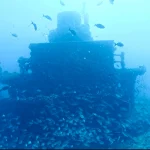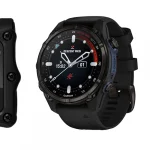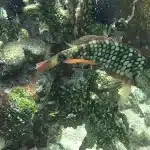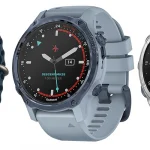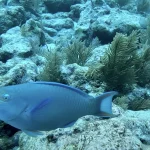Table of Contents
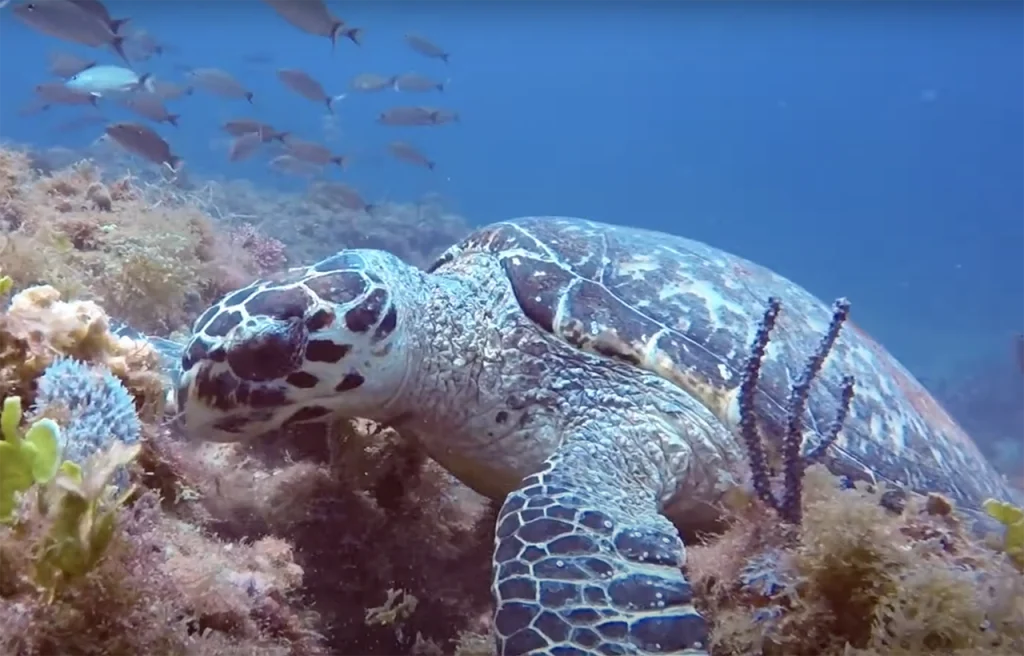
Loggerhead Reef stands out as one of Jupiter’s most captivating dive sites, offering a rich underwater experience filled with diverse marine life and stunning coral formations.
Article at a Glance
- Location: Loggerhead Reef is situated off the coast of Jupiter, Florida, known for its vibrant marine life and beautiful underwater landscapes.
- Depth: The reef features depths ranging from 60 to 75 feet, making it accessible for both beginners and advanced divers.
- Best Time to Dive: The optimal diving season is from March to October, with peak turtle activity occurring between May and July.
- Marine Life: Divers can expect to see a variety of species, including loggerhead turtles, Goliath groupers, reef sharks, and colorful tropical fish.
- Visibility: Water visibility typically ranges from 30 to 60 feet, enhancing the overall diving experience.
- Diving Conditions: Loggerhead Reef generally has mild currents, making it suitable for divers of all skill levels.
- Conservation Efforts: The area is supported by conservation initiatives, particularly by the Loggerhead Marinelife Center, focusing on the protection of sea turtles and coral reefs.
Loggerhead Reef Jupiter
Loggerhead Reef is characterized by its relatively shallow depths, averaging around 60 to 65 feet, which is considered shallow by Jupiter standards. This makes it accessible for divers of various skill levels. The reef is home to a variety of marine species, including Loggerhead turtles, Goliath groupers, and various species of sharks such as reef sharks and nurse sharks. The area is also known for its colorful corals and sponges, providing a picturesque diving experience.
Dive Experience
The dive typically begins with an entry point where divers can drift with the current along the reef’s edge. This method allows divers to explore various features of the reef while maximizing their chances of encountering marine life. Notable spots within Loggerhead Reef include:
- The Amphitheater: A popular area where divers often see large marine animals.
- Scarface: A dive site named after a legendary moray eel that resides there.
Accessibility and Services
Several dive shops in Jupiter offer guided tours and equipment rentals for diving at Loggerhead Reef, including:
- Jupiter Scuba Diving: Known for its excellent reviews and experienced guides.
- Florida Shark Diving: Specializes in shark encounters and has a strong reputation among divers.
- Jupiter Dive Center: Offers comprehensive services from equipment rental to guided dives.
All these centers provide wheelchair-accessible facilities, ensuring inclusivity for all divers.
What Marine Life Can I Expect To See?
Sea Turtles
Loggerhead Reef is renowned for its loggerhead sea turtles, which are the most common species in the area. These turtles are characterized by their large heads and can weigh between 200 to 350 pounds. They primarily feed on crabs, mollusks, and other encrusting animals found on the reef. During peak nesting season, from March to October, sightings of loggerheads, along with green and hawksbill turtles, become more frequent due to increased nesting activity along the nearby beaches.
Other Marine Life
In addition to sea turtles, the reef is home to a diverse array of marine species:
- Goliath Groupers: These large fish can often be seen resting on the reef.
- Reef Sharks: Various species of sharks inhabit the area, including nurse sharks and lemon sharks.
- Tropical Fish: Expect to see vibrant schools of fish such as jacks, grunts, and angelfish.
- Invertebrates: The reef supports numerous bottom-dwelling invertebrates and colorful sponges and corals that contribute to the ecosystem’s health.
Unique Sightings
Diving at Loggerhead Reef can also yield some unique encounters:
- Pelagic Species: Occasionally, divers may spot larger pelagic fish such as bluefin tuna or even rare sightings of whale sharks.
- Seasonal Visitors: Depending on the time of year, other species like Kemp’s Ridley turtles and various types of rays may also be observed.
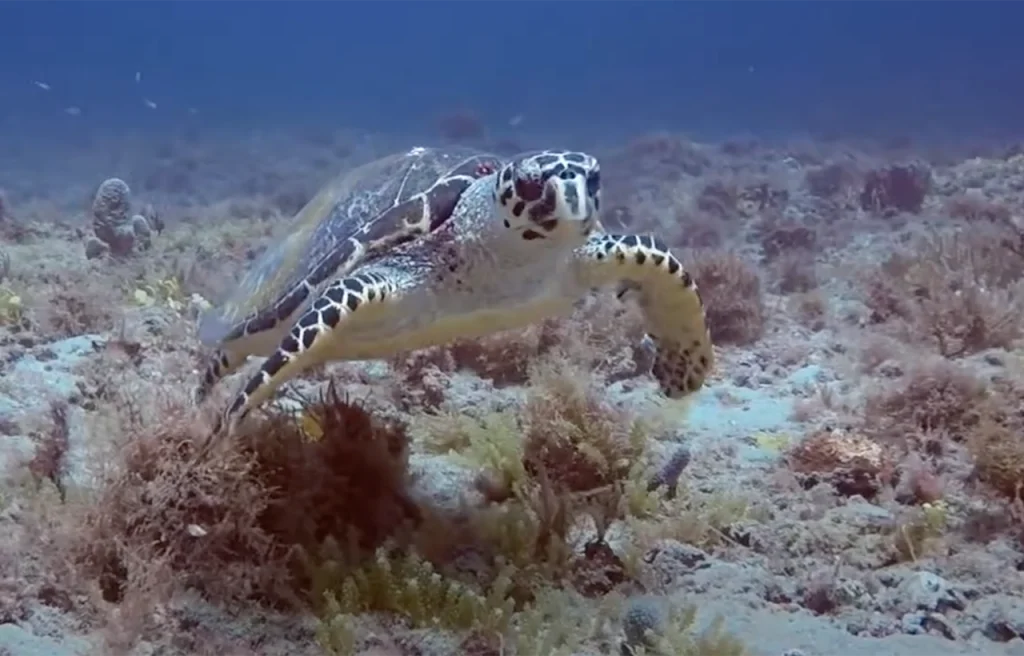
What Do Divers Say About This Site?
General Impressions
- Friendly and Professional Staff: Many divers highlight the helpfulness and friendliness of the crew at dive centers like Jupiter Scuba Diving and Jupiter Dive Center. They often describe the staff as personable and attentive, creating a welcoming atmosphere for both novice and experienced divers.
- Safety and Comfort: Divers frequently mention feeling safe during their dives, thanks to the crew’s expertise and attention to safety protocols. This reassurance is especially appreciated by those who are new to diving.
Dive Experience
- Abundant Marine Life: Divers consistently report encounters with a variety of marine species, particularly loggerhead turtles, which are a highlight for many. The vibrant underwater ecosystem includes sharks, rays, and colorful fish, making each dive exciting and visually stunning.
- Diverse Dive Sites: The variety of dive sites available in the area is praised, with many divers noting that each dive offers something unique, from beautiful reefs to wrecks filled with marine life. The clear waters enhance visibility, allowing for better viewing of the underwater landscape.
Recommendations
- Highly Recommended: Many reviews suggest that Loggerhead Reef is a must-visit for anyone in the area looking for an exceptional diving experience. Regular divers often return to these sites, indicating a high level of satisfaction with their experiences.
- Guided Tours: Some divers recommend staying close to guides during dives to maximize the experience, as they know the best spots and can point out hidden marine life.
Key Information
| Category | Details |
|---|---|
| Location | Loggerhead Reef, Jupiter, Florida |
| Depth Range | 60 to 75 feet (average depth around 65 feet) |
| Suitable For | Beginners and advanced divers |
| Visibility | Typically 30 to 60 feet, varies with conditions |
| Best Time to Dive | March to October (peak nesting season: May to July) |
| Marine Life | Loggerhead turtles, Goliath groupers, reef sharks, tropical fish, and more |
| Type of Diving | Drift diving, guided tours, spearfishing, and lobstering |
| Dive Conditions | Mild currents, generally favorable for divers |
| Guided Tours Available | Yes, offered by local dive shops |
| Conservation Efforts | Supported by Loggerhead Marinelife Center |
Highlights of Diving This Site?
Shallow Depths and Accessibility
- Depth: Loggerhead Reef is relatively shallow, with depths averaging around 60 to 65 feet, making it accessible for divers of all experience levels. This depth allows for longer dive times while enjoying the vibrant marine life without the need for advanced technical skills.
Rich Marine Life
- Turtle Encounters: The reef is famous for its population of loggerhead sea turtles, along with other species such as green and hawksbill turtles. Divers frequently report sightings of these majestic creatures swimming gracefully through the water.
- Large Fish Species: Expect to see impressive marine life, including Goliath groupers, various species of sharks (like reef and nurse sharks), and schools of colorful tropical fish. The presence of large aquatic animals enhances the thrill of each dive.
Unique Topography
- Reef Structure: The reef features a diverse underwater landscape with ledges, overhangs, and swim-throughs, providing excellent opportunities for exploration. This varied topography supports a rich ecosystem and allows divers to navigate different habitats during a single dive.
- Visibility: Divers often praise the crystal-clear waters, known as “Jupiter Blue,” which enhance visibility and make the underwater scenery even more spectacular. Good visibility is crucial for spotting marine life and enjoying the vibrant colors of the reef.
Notable Dive Sites
- Scarface: Named after a legendary moray eel, this site is known for its diverse marine encounters and beautiful ledges. Divers can expect to see not only turtles but also various reef fish and possibly even the famous “Scarface” moray eel itself.
- Tunnels: This dive site is celebrated for its unique swim-throughs and large fish encounters. It’s an excellent spot for those looking to experience the thrill of diving alongside big marine life in a stunning underwater environment.
My Favorite Dive Computers
I have compared the 3 top diving computers for each category to help making the right choice easier:
Iconic Spots At This Site
Loggerhead Reef
- Depth: Approximately 60-65 feet.
- Highlights: Known for its diverse marine life, including loggerhead turtles, green moray eels, and various species of tropical fish. The shallow depths make it accessible and enjoyable for divers of all skill levels.
Scarface
- Depth: Ranges from 65 feet at the top of the ledge to about 80 feet at the sand.
- Highlights: Named after a legendary scarred green moray eel, this site is rich in marine biodiversity. Divers can expect to see a variety of fish species, including Goliath groupers, nurse sharks, and numerous tropical fish. The ledge structure provides excellent opportunities for exploration and photography.
Tunnels
- Depth: Approximately 60 feet.
- Highlights: This site features swim-throughs and overhangs, making it a favorite for divers seeking encounters with large aquatic life such as reef sharks and Goliath groupers. The unique topography creates an exciting diving environment.
Captain Kurls
- Depth: Between 65 to 75 feet.
- Highlights: This site offers varied topography with multiple ledges and interesting blow-outs. It’s a great spot for spear fishing and is known for sightings of Hawksbill turtles, along with other marine life like nurse sharks and Goliath groupers.
Area 51
- Depth: Approximately 75 to 90 feet.
- Highlights: Known for its shark activity, divers often encounter curious reef sharks shortly after descending. The site features large ledges where divers can spot loggerhead turtles resting and moray eels hiding in crevices.
Lighthouse
- Depth: Varies between 61 to 64 feet on the ledge.
- Highlights: Located near the Jupiter Lighthouse, this site is favored for its abundance of marine life, including reef sharks, eels, and Goliath groupers, making it a popular choice for both recreational diving and lobstering.
Environmental Conservation Efforts at Loggerhead Reef
Loggerhead Marinelife Center (LMC)
- Rehabilitation Programs: The LMC operates a sea turtle hospital that rehabilitates injured or sick turtles. This facility is crucial for the recovery of turtles like Scout, who was treated after a severe boat strike. The center uses satellite trackers on rehabilitated turtles to gather data on their migration and behavior, contributing to vital conservation research (1)(2).
- Educational Outreach: LMC engages the public through interactive exhibits and educational programs aimed at raising awareness about marine life and conservation. Visitors can participate in activities such as night walks to observe nesting turtles and hatchling releases, fostering a connection to marine ecosystems (1)(2).
- Conservation Partnerships: LMC collaborates with over 90 partners globally to address threats to sea turtles, including pollution prevention initiatives and habitat protection projects (2).
Coral Reef Conservation
- Florida’s Coral Reef Initiatives: Conservation efforts focus on protecting and restoring Florida’s coral reefs through various programs aimed at reducing pollution, enhancing reef resilience to climate change, and conducting restoration projects. These efforts are vital for maintaining the health of coral ecosystems that support diverse marine life (3).
- Monitoring and Restoration: Agencies involved in coral conservation monitor water quality and ecosystem health while implementing restoration strategies for damaged reefs. This includes transplanting coral colonies from nurseries back onto the reef to promote recovery (3).
Community Involvement
- Volunteer Programs: Local dive shops and organizations often organize beach cleanups and educational workshops to promote responsible diving practices and environmental stewardship among divers and residents.
- Public Awareness Campaigns: Efforts are made to educate the community about the importance of protecting marine habitats, including responsible boating and fishing practices that minimize impacts on wildlife (2).
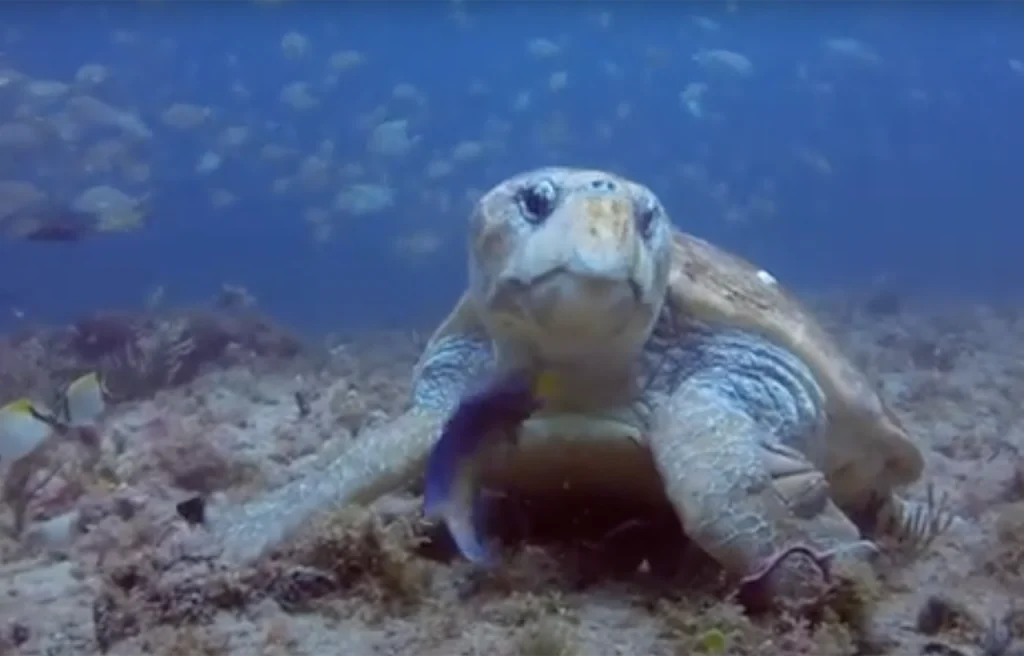
Maximizing Your Diving Experience at Loggerhead Reef
Timing Your Dive
- Peak Season: Plan your dives during the loggerhead nesting season, which peaks from March to October. This is when you are most likely to encounter a large number of loggerhead turtles resting on the reef, providing unforgettable experiences.
Approach Marine Life Calmly
- Gentle Encounters: When encountering loggerhead turtles, approach them slowly and calmly. Avoid chasing or startling them, as this can drive them away. Observing from a distance often leads to more meaningful interactions, allowing you to share space with these gentle giants.
Know Where to Look
- Top of the Reef: Loggerheads often rest on top of the reef rather than hiding beneath ledges. To increase your chances of spotting them, focus your search on the reef’s surface and move in zig-zag patterns rather than along the ledge.
Practice Responsible Diving Etiquette
- Buoyancy Control: Maintain good buoyancy control to avoid damaging coral and disturbing marine life. Move slowly and avoid sudden movements that could stir up sediment or harm delicate ecosystems.
- Avoid Touching Marine Life: Do not touch or chase any marine creatures, including corals and fish. Respect their space to ensure their safety and well-being.
Engage with Dive Operators
- Guided Tours: Consider diving with reputable local dive shops that offer guided tours. Experienced guides can help you find the best spots for turtle encounters and provide insights into the local ecosystem.
- Private Guides: If you prefer a more personalized experience, hiring a private guide can enhance your dive by ensuring you explore areas known for abundant marine life while maintaining safety.
Stay Informed and Educated
- Marine Conservation Awareness: Familiarize yourself with local conservation efforts and regulations regarding marine life interactions. Understanding the importance of protecting sea turtles and coral reefs will enrich your diving experience.
Capture Memories Responsibly
- Photography Tips: If you’re interested in underwater photography, use a slow approach to capture images without disturbing marine life. Focus on getting close-up shots of turtles while respecting their space.
Capturing Memories at Loggerhead Reef: Photography Tips
Prepare Your Gear
- Waterproof Equipment: Ensure you have a reliable waterproof camera or a protective housing for your camera. This is essential for capturing high-quality images without risking damage to your gear.
- Use Appropriate Lenses: A wide-angle lens or a fisheye lens can be beneficial for capturing the expansive underwater scenery and getting close-up shots of marine life.
Timing and Lighting
- Optimal Light Conditions: Dive during the morning or early afternoon when sunlight penetrates the water effectively. This natural light enhances colors and details in your photos (4)(5).
- Positioning Relative to the Sun: Always shoot with the sun behind you to illuminate your subjects and avoid harsh shadows. This technique helps bring out vibrant colors in your photos.
Approach Marine Life Thoughtfully
- Slow and Steady: Approach turtles and other marine life slowly to avoid startling them. A calm demeanor can encourage them to continue their natural behaviors, allowing for better photo opportunities.
- Positioning for Shots: When photographing turtles, try to be level with them or slightly below. This angle helps separate the turtle from the background, making it stand out more in your images.
Camera Settings
- Fast Shutter Speed: Use a fast shutter speed (around 1/320 to 1/500 seconds) to prevent motion blur, as even slow-moving subjects can appear blurry if you’re moving.
- ISO Adjustments: Increase your ISO in lower light conditions, but be cautious of noise. It’s often better to have a slightly noisy image than a blurry one.
Composition Techniques
- Framing Your Subject: Keep more space in front of the turtle than behind it to create a sense of movement into open space. Experiment with different angles—side, above, and head-on—to capture various perspectives.
- Incorporate Background Elements: Use the underwater landscape creatively in your compositions. Include corals or other marine life in the background to add depth and context to your shots.
Respect Wildlife
- Avoid Disturbing Animals: Never chase or corner turtles; allow them to approach you if they are curious. Respect their space to minimize stress on the animals.
- Follow Local Guidelines: Familiarize yourself with local conservation rules regarding interactions with marine life to ensure you’re contributing positively to their protection.
Practice Patience
- Wait for the Right Moment: Sometimes, the best shots come from waiting quietly for turtles or other marine life to come into view naturally. Patience can yield rewarding results in underwater photography.
Frequently Asked Questions
When is the best time to dive Loggerhead Reef?
The best time to dive at Loggerhead Reef in Jupiter, Florida, is during the sea turtle nesting season, which runs from March 1 to October 31. This period sees a significant increase in the presence of loggerhead turtles and other species, making it an ideal time for divers to encounter these magnificent creatures.
Key Highlights of the Diving Season:
Peak Activity: The peak nesting activity occurs between May and July, when divers can expect to see a high number of loggerhead turtles resting on the reef. During this time, encounters with these turtles are almost guaranteed on every dive, with reports of seeing upwards of a dozen turtles in a single outing.
Visibility and Conditions: While visibility can vary, many divers report better conditions during the nesting season. The warmer waters and increased marine activity contribute to a vibrant diving experience.
Marine Life Diversity: In addition to loggerheads, divers may also encounter other species such as green turtles, hawksbill turtles, and various fish species like Goliath groupers and reef sharks. The abundance of marine life during this season enhances the overall diving experience.
Environmental Considerations: It’s important for divers to practice responsible diving etiquette during this time, such as approaching turtles calmly and avoiding any actions that could disturb their natural behaviors56.
What is the visibility like while diving Loggerhead Reef?
Visibility while diving at Loggerhead Reef typically ranges from 30 to 60 feet, depending on various factors such as weather conditions, water clarity, and seasonal changes.
General Conditions: Divers often report good visibility during the peak diving season, especially from March to October, which coincides with the sea turtle nesting season. During this time, the water tends to be clearer, enhancing the overall diving experience.
Seasonal Variations: Visibility can fluctuate throughout the year. For example, it may be less optimal during winter months when the site is less active and divers tend to visit other locations.
Environmental Factors: Events such as heavy rains or strong currents can temporarily affect visibility. However, Loggerhead Reef generally maintains decent conditions due to its location and the health of the surrounding coral ecosystem.
Personal Experiences: Many divers have shared experiences of encountering upwards of a dozen loggerhead turtles during dives, often remarking on the clarity of the water that allows for stunning photography and observation of marine life.
How deep are the dives at Loggerhead Reef?
Diving at Loggerhead Reef typically involves depths ranging from 60 to 75 feet.
Average Depth: The average depth at Loggerhead Reef is around 65 feet(approximately 20 meters), which is considered shallow compared to many other dive sites in the region.
Maximum Depth: Some areas of the reef can reach depths of up to 75 feet (about 23 meters) near the sandy bottom, particularly in specific sections like the ledges.
Shallow Areas: The topside of the reef generally sits at depths in the low 60s, making it accessible for divers of varying experience levels.
Is Loggerhead Reef suitable for beginners?
Yes, Loggerhead Reef is suitable for beginners. Here are some key points highlighting why this dive site is an excellent choice for novice divers:
Depth and Accessibility
Shallow Depths: The average depth at Loggerhead Reef ranges from 60 to 75 feet. This relatively shallow depth makes it accessible for beginner divers who may be more comfortable in shallower waters.
Marine Life and Environment
Abundant Marine Life: The reef is known for its diverse marine life, including loggerhead turtles, colorful fish, and various invertebrates. Beginners often find the opportunity to see such vibrant wildlife exciting and encouraging, enhancing their overall experience.
Conditions
Mild Currents: Loggerhead Reef generally experiences mild currents, which are manageable for beginner divers. This creates a more relaxed diving environment, allowing new divers to focus on their skills without feeling overwhelmed.
Guided Dives
Professional Guidance: Many local dive shops offer guided dives at Loggerhead Reef, ensuring that beginners are accompanied by experienced instructors. These guides provide essential safety briefings and support, making it easier for novices to navigate the underwater environment safely.
Training Opportunities
Introductory Programs: For those without prior experience, many dive centers offer introductory scuba diving courses that include pre-dive training and supervised dives. This structured approach helps beginners learn the basics of scuba diving while exploring the reef.
Is Loggerhead Reef suitable for advanced divers?
Yes, Loggerhead Reef is suitable for advanced divers.
Depth and Variety
Depth Range: Loggerhead Reef typically has depths ranging from 60 to 75 feet, with certain areas offering deeper sections that can present more challenging conditions for advanced divers. This depth allows for exploration of ledges, undercuts, and other unique underwater features that seasoned divers enjoy.
Rich Marine Life
Diverse Ecosystem: Advanced divers can encounter a variety of marine species, including larger animals such as Goliath groupers, various species of sharks (like reef sharks), and, of course, loggerhead turtles. The abundance of marine life provides excellent opportunities for underwater photography and observation.
Drift Diving Opportunities
Drift Diving: Loggerhead Reef is known for its drift diving conditions, which allow divers to glide along the reef with the current. This experience is ideal for advanced divers looking to enhance their skills in buoyancy control and navigation while exploring the diverse marine environment.
Specialized Activities
Spearfishing and Lobstering: Advanced divers often engage in activities such as spearfishing and lobstering on the eastern side of the reef, which require specific skills and certifications. These activities add an extra layer of excitement for experienced divers.
Unique Underwater Features
Exploration Potential: Advanced divers can explore various iconic spots within Loggerhead Reef, such as ledges and swim-throughs that offer intricate coral structures and unique habitats. This exploration is appealing to those looking for a more adventurous dive experience.
Jupiter Dive Sites
- Area 51
- Area 29
- Tunnels
- Loggerhead Reef
- Bluffs Reef
- Bonnies
- Captain Kurls
- Spadefish Point
- Coral Cove Park
- Captain Mike’s
- Julies
- Emerald Charters Shark Dive
- Jupiter Wreck Trek
- Donut
- Scarface Reef Andrew “Red” Harris No Shoes Reef
- Jupiter Inlet
- Step Reef
- Sawfish Bay
- Marine Restoration Reef
- North County Reef
- Lighthouse
- Finz Den
- High Ledge
- Leigh’s Ledge
- Monkey’s Ledge
- Gary’s

